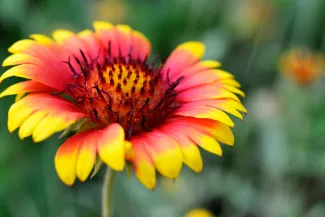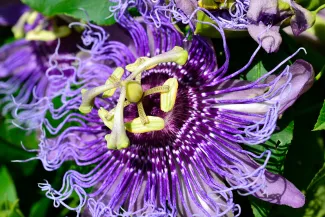Fall wildflowers not only bring a splash of color to the landscape, but are great for pollinators like bees and butterflies. Before the blazing yellow, orange and red leaves of fall sneak across our landscape, be sure to listen for the buzz of insects wherever wildflower blooms flourish.
Zoom in to these intense fall blooms:

Button Blazing Star (Liatris aspera) blooms from July through October and gives sun-soaked prairies spikes of soft purple blossoms. Bumblebees and butterflies, including painted ladies, swallowtails and sulfurs, are regular visitors to this eye-catching perennial.

The reddish-orange Indian paintbrush (Castilleja indivisa) typically blooms from early spring through mid-summer, but this paintbrush was coating an eastern Oklahoma pasture with vivid color this fall. This spring-typical annual is a host plant for the buckeye butterfly.

Though short-lived, the incredible yellow rays of brown-eyed Susan (Rudbeckia triloba) can brighten native prairies and backyards alike. This drought-tolerant perennial blooms from June through October and provides nectar for pollinators and seeds for birds.

The multi-colored florets of Indian blanket (Gaillardia pulchella), our state wildflower, peek through the prairie every summer and attract a large number of native bees as well as many butterflies.

A bizarre combination of color and texture, the wavy purple tendrils of passionflower (Passiflora sp.) attract a number of pollinators and serve as a host plant for Gulf fritillary butterflies as well as a few species of hairstreak butterflies.
Learn more about wildlife-friendly plants and get landscaping ideas for your backyard in the Wildlife Department’s “Landscaping for Wildlife: A Guide to the Southern Great Plains.”